Key takeaways:
- Interactive elements, such as discussions and group tasks, significantly enhance engagement and learning retention in workshops.
- Creating a welcoming environment and using open-ended questions fosters deeper discussions and encourages participation.
- Utilizing digital tools like polling software and collaborative platforms can invigorate workshops and encourage real-time interaction.
- Setting clear expectations and incorporating follow-up activities are essential for maintaining engagement and building connections post-workshop.
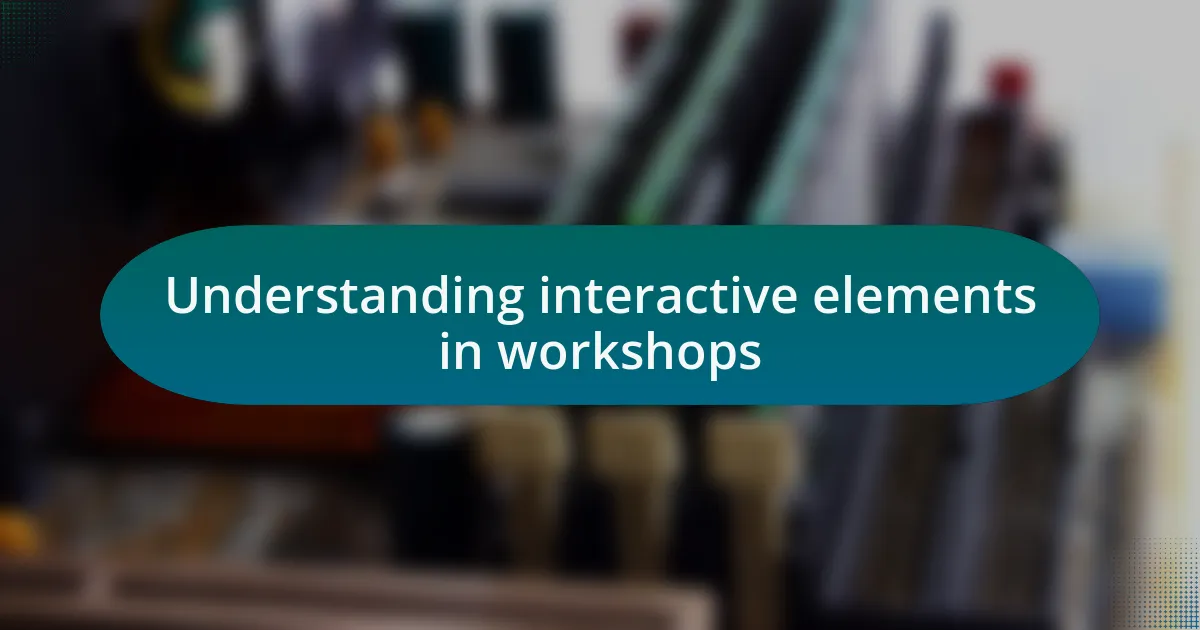
Understanding interactive elements in workshops
Interactive elements in workshops are crucial for fostering engagement and learning retention. I remember my first hands-on workshop experience; the moment I was given a chance to work on a real project rather than just listen to lectures, everything changed. It was eye-opening to see how much more I absorbed when I could actively participate.
When we talk about interactive elements, think of them as the heartbeat of a workshop. They include discussions, group tasks, and even technology integration like live polls or Q&A sessions. Have you ever been in a session where the presenter merely spoke for an hour? It can be draining, right? In contrast, when I am involved in activities, it fuels my motivation to learn and share my ideas.
Moreover, integrating diverse interactive formats can cater to different learning styles. I once facilitated a workshop where we employed role-playing exercises, which allowed participants to experience scenarios firsthand. The transformation in the room was palpable—people became animated, asking questions and sharing insights as they stepped into new perspectives. Isn’t it powerful to see how interaction can create a vibrant learning community?
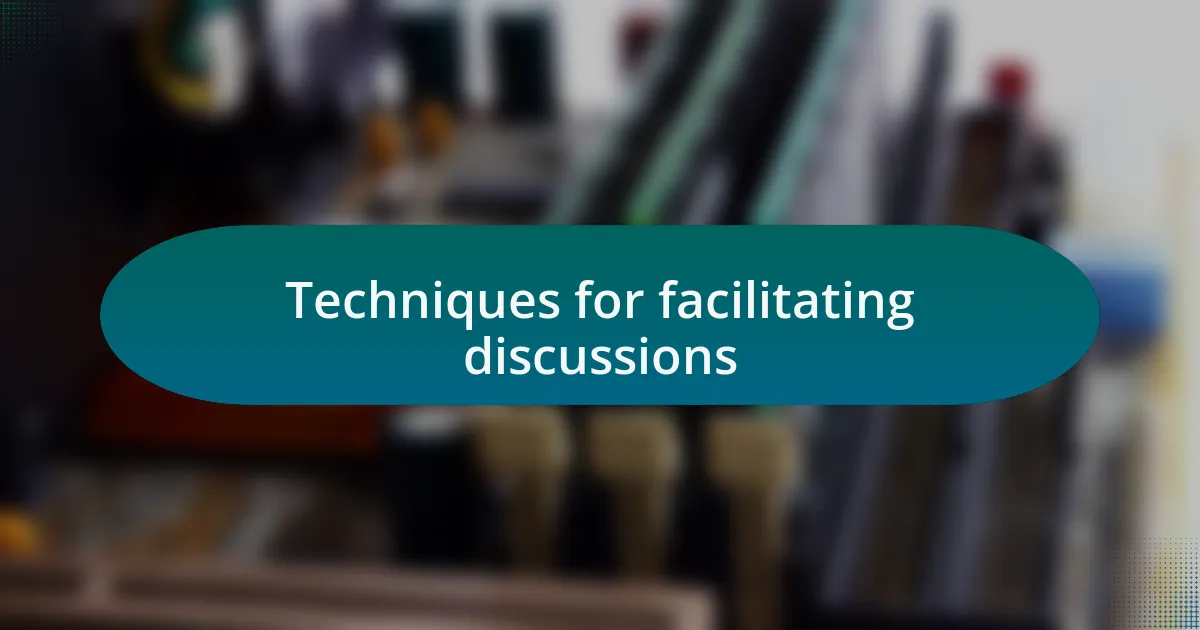
Techniques for facilitating discussions
Facilitating discussions effectively requires creating a welcoming environment where participants feel comfortable sharing their thoughts. I once led a session where I started with a simple icebreaker question that got everyone talking. It amazed me how a few laughs and light-hearted exchanges encouraged even the most reserved individuals to chime in and share valuable insights.
In my experience, using open-ended questions can significantly deepen the dialogue. During a recent workshop, I asked, “What challenges have you faced when adopting new technology?” Almost instantly, a wave of hands shot up, and the conversation flowed. This not only helped participants connect over shared experiences, but it also became a rich source of ideas and solutions. Have you ever noticed how one question can spark a cascade of creativity?
Equally important is the role of active listening in fostering discussions. I remember a moment when a participant shared their apprehension about transitioning to remote work. By acknowledging their concerns and looping back to their comment later, I created a sense of trust and validation. This not only encouraged further dialogue but also made everyone feel valued. Isn’t it fascinating how listening can transform an interaction into a collaborative exploration?
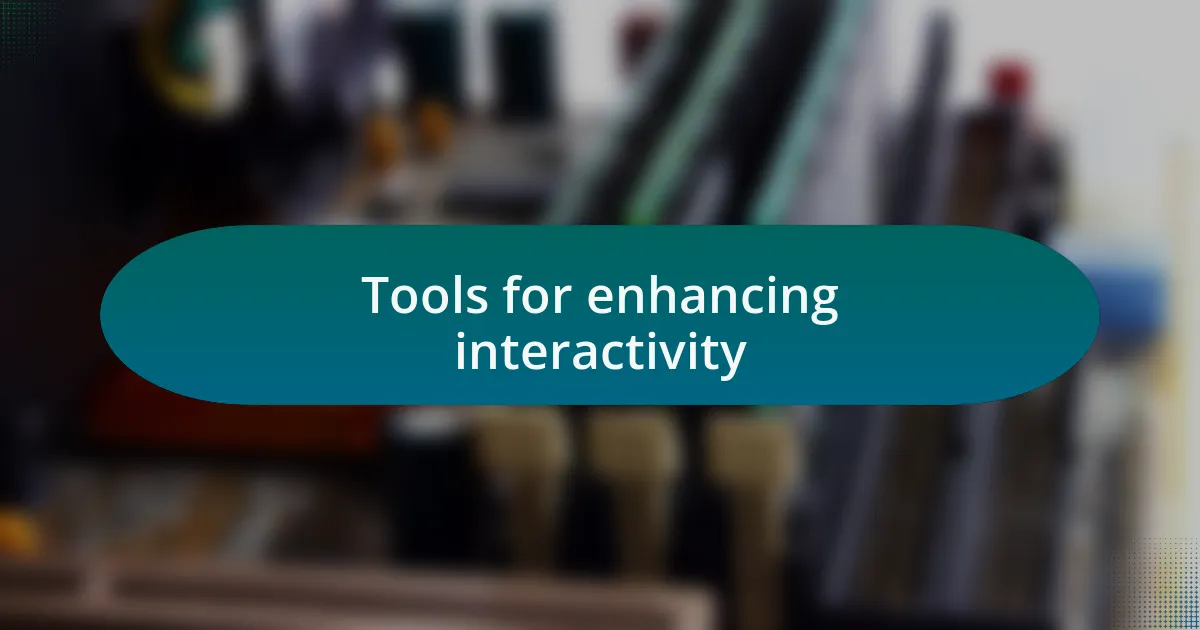
Tools for enhancing interactivity
When it comes to enhancing interactivity, digital tools can make a world of difference. I recall using polling software during a tech workshop. Participants eagerly responded to questions in real-time, and the immediate feedback created an electrifying atmosphere. Seeing the results displayed instantly spurred discussions and encouraged everyone to dive deeper into their opinions. Have you ever seen a room suddenly come alive from just one poll?
Another game-changer has been the integration of collaborative platforms like Miro or Jamboard. I vividly remember a session where we used Miro for brainstorming sessions. As participants contributed ideas onto a shared board, I noticed a blend of anticipation and excitement. It felt like everyone was part of a creative process, building off each other’s thoughts visually. Just imagine being able to manipulate those shared ideas right in front of you; how does that shift the energy in the room?
Finally, I often turn to breakout rooms during virtual workshops. Splitting participants into smaller groups allows for more intimate discussions. In one instance, I facilitated a brainstorming session in breakout rooms about future tech trends. The energy was palpable; they exchanged ideas freely in a less intimidating space. Have you experienced how smaller, focused discussions can sometimes lead to the best insights?
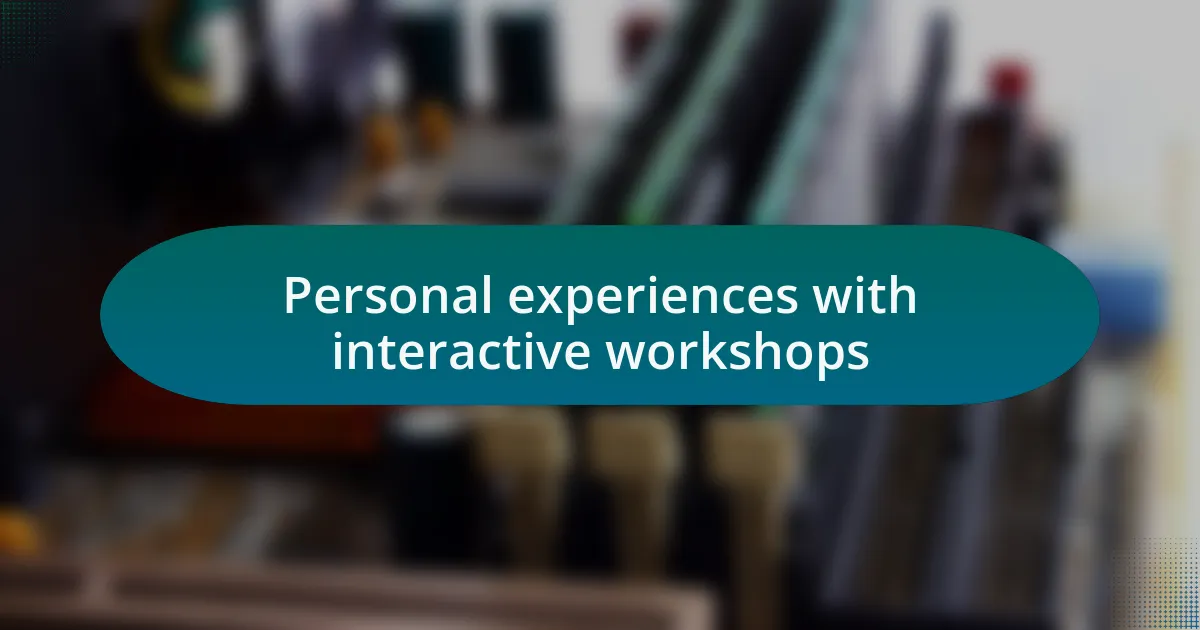
Personal experiences with interactive workshops
During my early days of conducting workshops, I learned the power of icebreakers. Once, I started a session by asking attendees to share their favorite tech gadgets. Watching individuals’ faces light up as they discussed personal favorites was a revelation for me. It’s interesting how a simple question can shift the dynamics of a group and foster immediate connections—have you noticed how sharing personal stories can create an instant bond among strangers?
I also remember a workshop where I employed hands-on activities. Instead of sticking to slides, I brought along Raspberry Pi kits for participants to play with. The thrill in the room was palpable; the participants transformed into problem-solvers, working together to tackle coding challenges. When you see a group huddled over a project, collaborating and troubleshooting, it’s a reminder that active engagement can make learning not just effective but genuinely enjoyable. Isn’t it fascinating how tangible experiences can solidify understanding in ways presentations often can’t?
Another memorable experience was during a panel discussion where I encouraged audience members to submit questions anonymously via a chat tool. The trickle of questions quickly turned into a flood, and the panelists were visibly energized. The tension broke, and the conversation flowed more naturally. Have you ever felt that sense of momentum building when everyone is engaged? It’s moments like these that reinforce the idea that fostering interactivity can significantly enhance the learning environment.
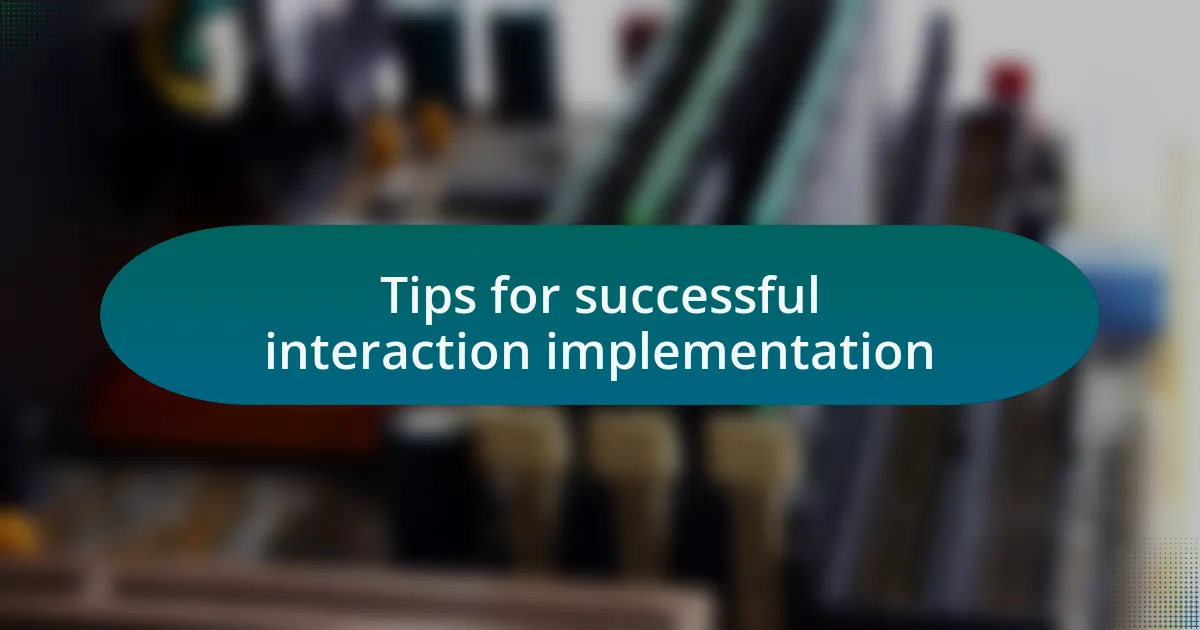
Tips for successful interaction implementation
When implementing interactive elements, I found that setting clear expectations at the beginning is crucial. I recall a workshop where I briefly outlined how participants would be involved, from group discussions to hands-on projects. That clarity created a sense of anticipation, and participants approached the workshop eager to contribute rather than just absorb information. Have you noticed how a simple guideline can transform passive attendees into active contributors?
Another strategy I’ve successfully used is incorporating technology to facilitate interaction. During a recent event, I utilized live polling tools to gauge opinions on key topics. In real time, I could see not only the diversity of perspectives but also how that data sparked discussions among participants. It’s fascinating how technology can bridge gaps and encourage conversations that might not happen otherwise, isn’t it?
I’ve learned that follow-up activities are often overlooked but can significantly enhance interactivity. After one particularly engaging session, I sent out a brief survey asking for feedback on what resonated with attendees. This not only continued the conversation beyond the workshop but also made participants feel valued, like their opinions were essential. Have you ever considered how a simple follow-up could solidify connections and stimulate ongoing dialogue?